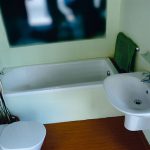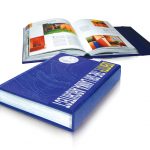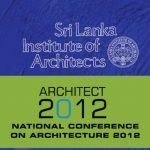-
A Journey In Architecture
July 2011
 It is not possible to talk only about Milroy Perera’s work. To do so would be to ignore the human sensitivities and relationships that have made his an amazing and ongoing journey in architecture.
It is not possible to talk only about Milroy Perera’s work. To do so would be to ignore the human sensitivities and relationships that have made his an amazing and ongoing journey in architecture.
By Dimantha Weliyange
His architectural education started in the 1960’s when most parents wanted their sons and daughters to pursue a career in medicine. Despite successfully completing his secondary education in the science stream he was unable to secure one of the 75 places at the medical school. As a youth he had always been involved in building houses with his father and at the urging of his uncle he started working at Panditharatne and Adithya. His initial application to study architecture at the Technical College in Moratuwa was rejected on the grounds that he did not possess a credit pass in English. Feeling unfairly judged when his application was rejected a second time, he sought the help of the then Minister of Education I.M.R.A Iriyagolla. Convinced of his sincerity Minister Iriyagolla persuaded the Head of the College to accept Milroy to the school, which had recently been transferred from the Technical College at Moratuwa to the Faculty of Natural Sciences at the University of Colombo.
Milroy fondly remembers his first year class as “a nice mix of 30 of us of different shapes, sizes and colors who were bound by a desire to study architecture.” Valentine Gunasekera who was teaching at the time had a great influence on Milroy due to his ability to relate to the students at their level. Whilst still a student Milroy worked for Valentine and subsequently for the Buildings Department where he was involved with Peter Keuneman’s shanty clearance initiative at Maligawatte where under the guidance of Panini Tennekoon, Milroy and his colleagues Percy Ovitigama, Tommy Wijesekara completed the incredible task of building 60 houses in 60 days.
Having completed his RIBA part I in Sri Lanka Milroy was accepted to the University College London (Bartlett) to follow the Advanced Diploma Course in 1971. During his time at the Bartlett he was exposed to luminaries such as Rainer Benham, Luis Khan and James Stirling who had a significant influence on the young Milroy. In 1973, during his final critique, Milroy was offered a job by David Alford of Yorke, Rosenberg & Mardal (YRM) on the strength of the excellent draftsmanship which he developed during his time at Panditharatne and Adithiya. He accepted and worked at YRM for a short while, but during the next five years Milroy worked for no less than thirteen firms before finally settling at Michael Lyell Associates in Knightsbridge.
His wife Lakshmi and their two young sons returned to Sri Lanka in 1981, and Milroy shuttled between Sri Lanka and London balancing his time between family and work. Though it was not a satisfactory situation Milroy was compelled to continue his employment in London due to the scarcity of work in Sri Lanka. It was during this time that Milroy developed, through his involvement with the production of the ‘White Book’, an enduring friendship with the late Geoffrey Bawa. Geoffrey urged Milroy to return to Sri Lanka permanently and in March 1991 after 20 years in London Milroy finally returned to Sri Lanka for good.
Almost immediately, Milroy was invited by Geoffrey Bawa to collaborate on the Kandalama Hotel Project for Aitken Spence. For the first time in his life Geoffrey accepted another as an equal. Milroy Perera and Geoffrey Bawa were co-consultants to the project. In 1991 he formed the Milroy Perera Deepal Wickremesinghe Partnership with Deepal Wickremesinghe handling among other things the structural engineering work. The Kandalama Hotel helped establish the new firm and they were commissioned for a variety of projects ranging from industrial buildings to garment factories. They also worked on other hotel projects including an extension to the Triton hotel. In 1994 Ajit Wijesekera of Union Apparel invited Milroy Perera to design the Blue Water Hotel at Wadduwa. With the clients consent Milroy invited and collaborated with Geoffrey Bawa as co-consultants. The Blue Water Hotel was completed in 1998.
In January 2001 on “mutual agreement between the partners” MPDW was dissolved and Milroy Perera formed Milroy Perera Associates with his son Arosha. In 2002 Milroy was invited to collaborate with Richard Murphy Architects of Edinburgh on the British High Commission project. Though MPA was engaged as the local consultant to the project, they made significant contributions to the design process particularly during the early stages. The project was completed in 2008.
Under the guidance of Milroy, Milroy Perera Associates moved from strength to strength. Their portfolio includes the Fairmont & Fairway Residencies, Radion Residencies, JAAL Hairdressing Salon as well as several department stores and private residences. Their current work includes Fairway City Mall, a 700,000 sqft. shopping mall at Rajagiriya which would feature a bowling alley and an ice rink for the first time in Sri Lanka.
Milroy Perera is a visiting lecturer and external examiner for the Faculty of Architecture, University of Moratuwa as well as the Colombo School of Architecture. He has also served as the Hony. Secretary the Board of Architectural Education (1986-1990); Hony Treasurer (1992-1994) and as the Hony Secretary to the Sri Lanka Institute of Architects (1994-1995).

















